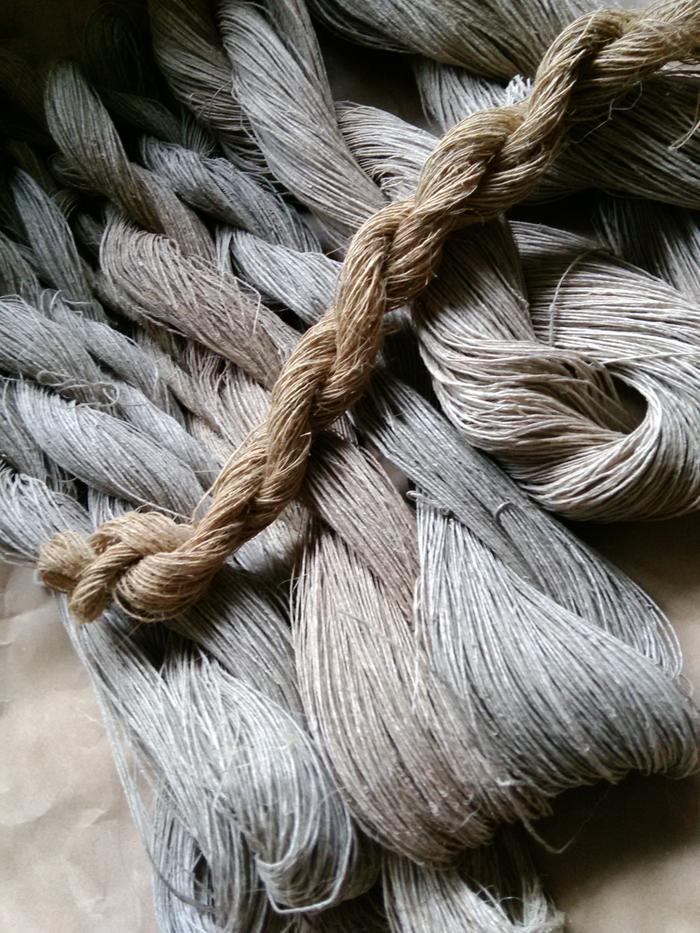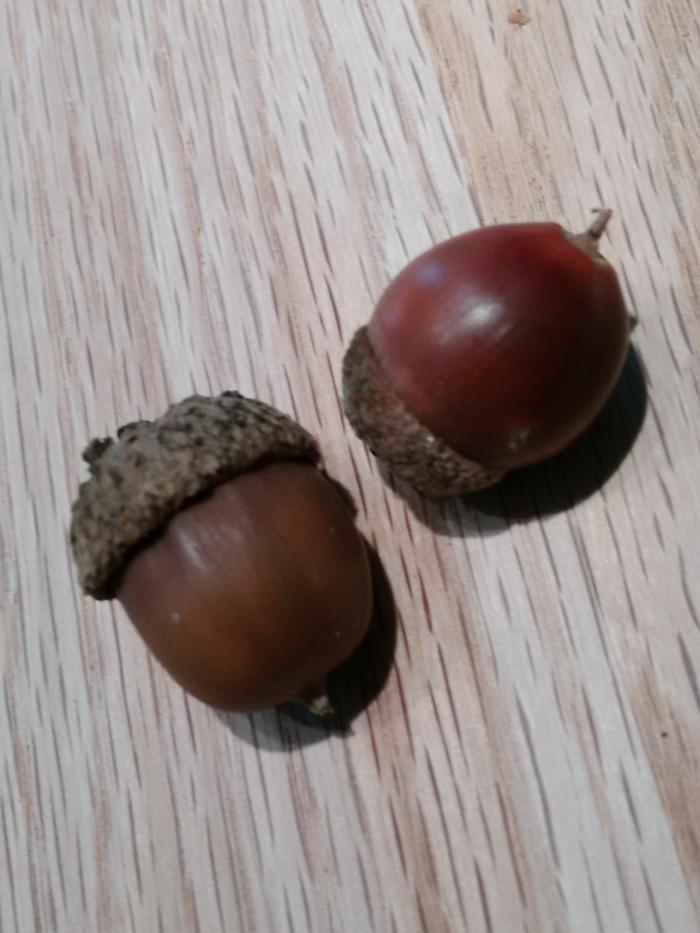As part of our
local flax to linen
project, I'm keen to dye some of the yarn I spun. The goal of the flax to linen project is to get people thinking about their clothing and to rekindle the skills we need to grow it locally. Since wool is already very popular among handspinsters, but a bit too warm for summer, the group decided on growing flax and processing it into linen. Since the focus is on local, I've decided to source as much of my dyestuff locally as possible.
I'm a bit late to the game with the dyeing of the linen, as the others in the group have already found lots of lovely local colours.

I'll be picking their brains soon about how to do it, but first, I want to try it my own way.
The first step is to boil the yarn to remove any pectin and impurities. I did this with about 2 Tbs of washing soda in a large pot of
water. Add the presoaked yarn and bring to a boil. I boiled for about 10 to 20 minutes, then changed the water, repeat. I did this until the water was clear at the end of the boiling.
You can see how much guck the boiling gets out of the yarn here. Most of the skeins have been boiled, but the one laying crosswise hasn't and is still quite dark.
 The next step will be to mordant the yarn.
The next step will be to mordant the yarn. Mordanting helps to affix the dye particles to the fibres - basically, it makes the colours brighter and last longer.
I'm working from the book, Harvesting Color by Rebecca Burgess (you may know her from the
fibreshed movement). It's one of the few places I've found the acorn mordant recipe. Acorns are really high in tannin which is one of the best mordants for cellulose fibres like linen. Oh, and what great news! It's acorn season. Off to the local park I pop and pick up a pound of acorns.

...very wormy acorns. But oh well.
According to the book, what I do next is to shell the acorns, grind the nuts and soak them in water for a few days to release the tannin. If I wanted and if the nuts weren't so wormy, I could continue leaching tannin and use the nuts to make flour.
This is where I'm at so far. I still have to decide on what dye I might use.
Anyone here dye linen before with natural dyes? What were your results like?














